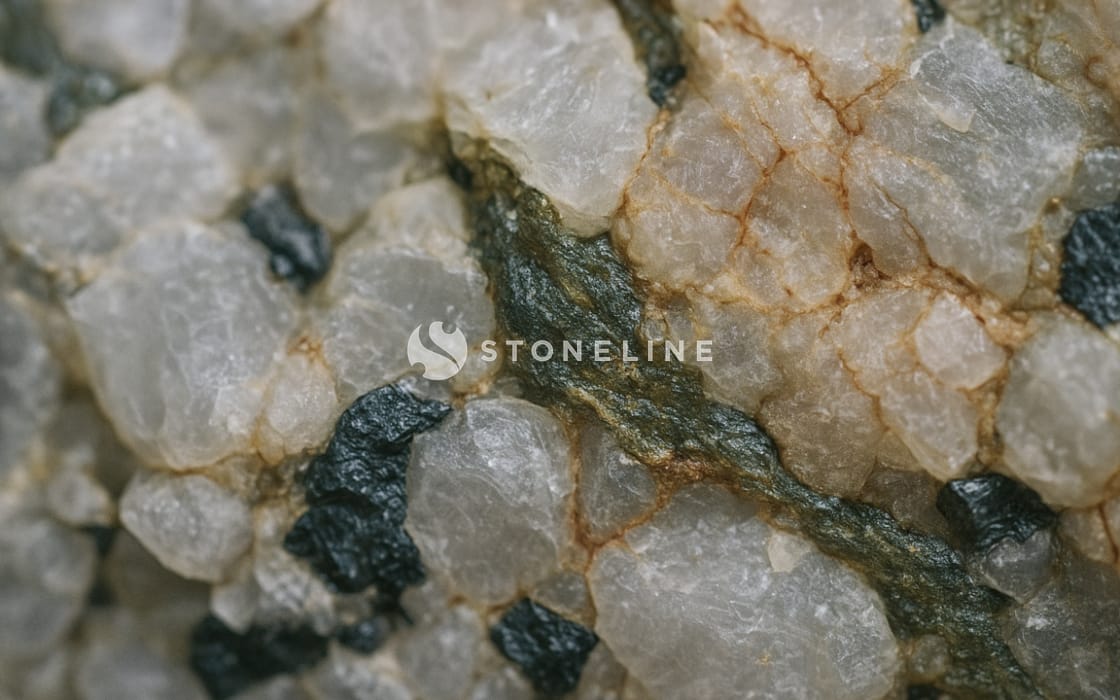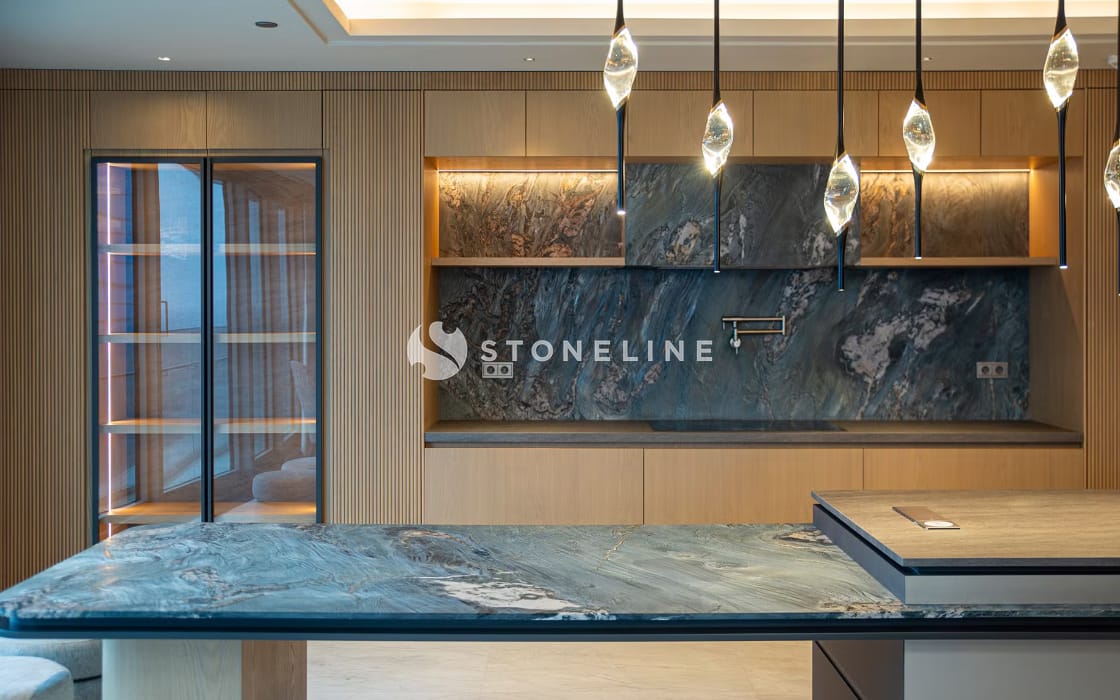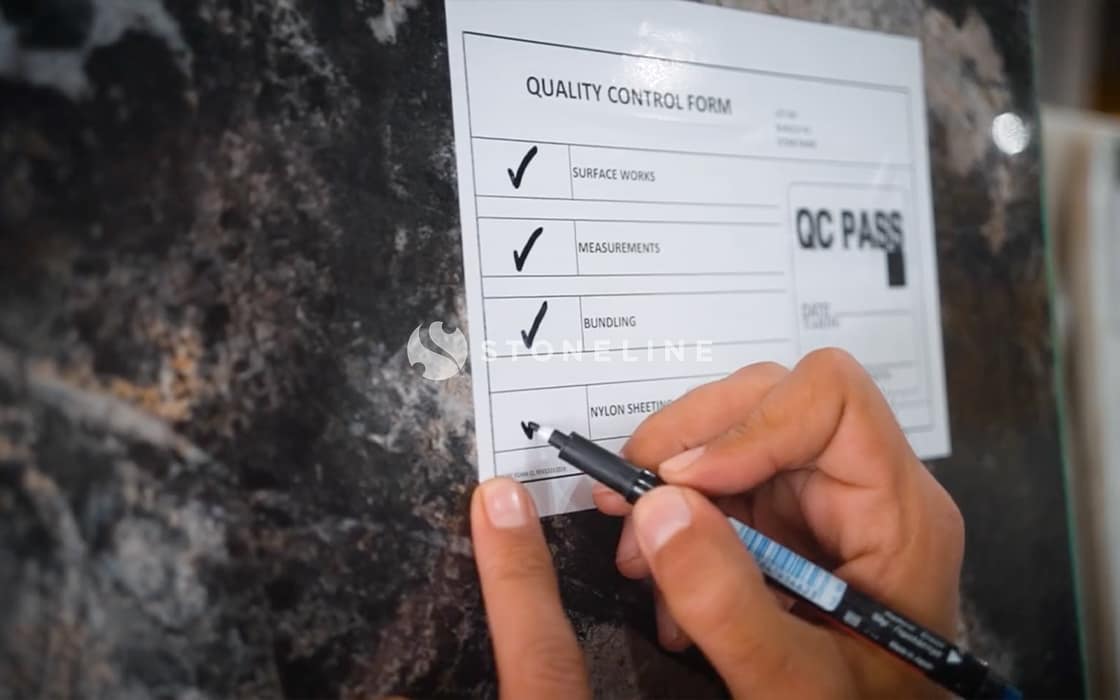In this article, you will discover why natural stone remains one of the most preferred materials—from residential spaces to public buildings. You’ll get to know both common and lesser-known types of stone, explore how these materials form deep within the Earth’s crust, and gain valuable insights into their roles in history, wellness practices, and modern design.
Features That Make Natural Stone Stand Out
Natural stone offers a unique combination of aesthetics, durability, and environmental sustainability:
- Its longevity provides cost advantages over time.
- Offers great design flexibility—from rustic styles to contemporary lines.
- Environmentally friendly due to its recyclable and reusable nature.
- Easy to maintain: regular cleaning and surface sealing every 1–2 years are sufficient.
Common Types of Natural Stone
Below are brief descriptions of some natural stone types frequently encountered in living spaces and public areas:
Granite
Highly durable. Ideal for kitchen countertops and flooring or wall cladding in high-traffic areas.
Marble
Known for its natural veining and timeless elegance. A versatile natural stone that can be used in wet areas, wall cladding, countertops, various decorative materials, objects, and sculptures.
Limestone
A soft sedimentary rock. Used in exterior cladding and fireplace designs.
Quartzite
A hard metamorphic stone with high resistance to scratches and stains. Frequently chosen for countertops and high-traffic areas due to these properties.
Slate
Fine-grained texture and natural cleavage surfaces make it slip-resistant. Commonly used in landscaping and flooring.
Travertine
A porous variety of limestone. Highly suitable for different surface finishes; can be textured through filling techniques. Ideal for outdoor spaces, poolside areas, landscaping, and cladding.
Rare and Lesser-Known Stones
These unique stones add distinct color and historical depth to projects:
- Larvikite: A feldspar stone from Norway in bluish-grey tones. Popular in interior spaces during the Art Nouveau period. [Source]
- Serpentine: Found in green tones, often used in Russian Orthodox icons. A precious stone. [Source]
- Pietra Dura: An art form used in the Taj Mahal, where colorful marbles are polished and turned into mosaics. [Source]
The Geological Journey of Natural Stone
Natural stones form through three main geological processes:
- Igneous (Magmatic): Granite and basalt are formed when underground magma cools.
- Sedimentary: Mineral particles compact under pressure to become sandstone or limestone.
- Metamorphic: Heat and pressure transform existing rocks into marble or slate.
Characteristics like surface texture, color, and hardness are the result of millions of years of physical and chemical processes. For a detailed classification
Natural Stone in Alternative Therapies
In some traditional practices, natural stones are believed to have healing properties—though scientific evidence is limited.
“Crystal therapy enthusiasts claim amethyst calms the mind, while rose quartz promotes emotional healing.” — American Crystal Therapy Association [Source]
- Stone therapy is common in spa and wellness centers.
- However, clinical trials proving their physical effects are insufficient.
[PMC Study]
Maintenance and Care Tips
To extend the aesthetic and functional life of natural stone surfaces, follow these routines:
- Clean with appropriate cleaning products for natural stone.
- Immediately wipe up spills.
- Use coasters and cutting boards to prevent scratches.
Historical and Cultural Significance
Natural stone has symbolized power and faith throughout civilizations:
- In Ancient Egypt, granite obelisks were carved at the Karnak Temple over 3,000 years ago. [UNESCO]
- Pentelic marble was used in Greek temples (e.g., the Parthenon). [Acropolis Museum]
- The stone walls of Machu Picchu (Inca civilization) were crafted so precisely they still fit together without mortar. [National Geographic]
Modern Innovations with Natural Stone
In today’s projects, natural stone stands out for both environmental and structural advantages:
- As a durable material, it can contribute up to 2 points in LEED certification. [LEED Guide]
- Stone façades reduce heating and cooling costs through thermal mass effects. [Department of Energy]
- Engineered stone panels are resistant to seismic stress and are increasingly used in high-rise buildings.
Shape Your Vision with Stone
You’ve now explored the journey of natural stone—from solid geological layers to hand-crafted mosaics. Whether it’s a kitchen renovation, the restoration of a historical structure, or an experimental wellness project, you’re ready to choose the right stone for any project. Every stone holds a story millions of years in the making—and it’s up to you to bring that story into your space.
 Stoneline
Stoneline





